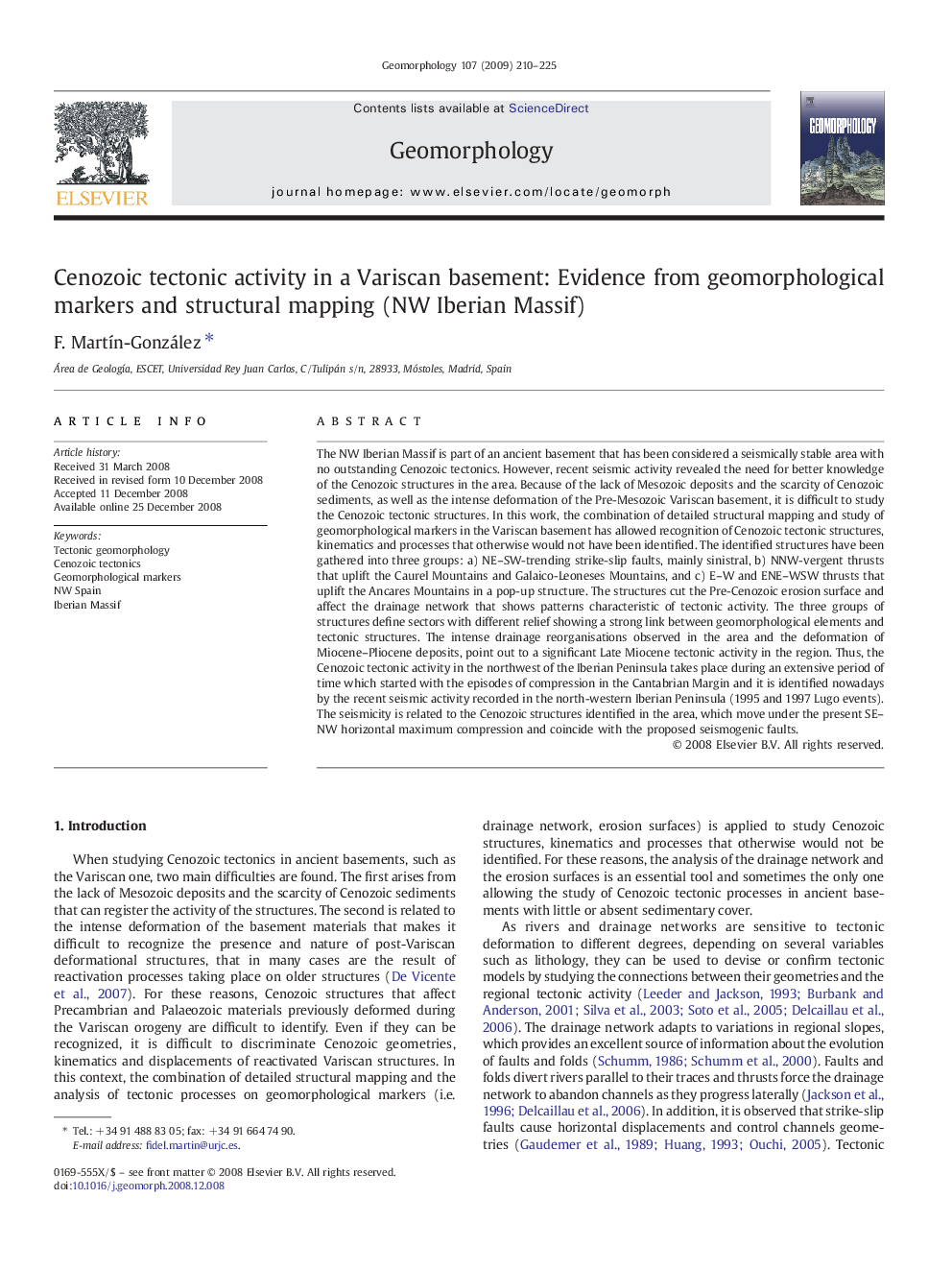| Article ID | Journal | Published Year | Pages | File Type |
|---|---|---|---|---|
| 4686400 | Geomorphology | 2009 | 16 Pages |
The NW Iberian Massif is part of an ancient basement that has been considered a seismically stable area with no outstanding Cenozoic tectonics. However, recent seismic activity revealed the need for better knowledge of the Cenozoic structures in the area. Because of the lack of Mesozoic deposits and the scarcity of Cenozoic sediments, as well as the intense deformation of the Pre-Mesozoic Variscan basement, it is difficult to study the Cenozoic tectonic structures. In this work, the combination of detailed structural mapping and study of geomorphological markers in the Variscan basement has allowed recognition of Cenozoic tectonic structures, kinematics and processes that otherwise would not have been identified. The identified structures have been gathered into three groups: a) NE–SW-trending strike-slip faults, mainly sinistral, b) NNW-vergent thrusts that uplift the Caurel Mountains and Galaico-Leoneses Mountains, and c) E–W and ENE–WSW thrusts that uplift the Ancares Mountains in a pop-up structure. The structures cut the Pre-Cenozoic erosion surface and affect the drainage network that shows patterns characteristic of tectonic activity. The three groups of structures define sectors with different relief showing a strong link between geomorphological elements and tectonic structures. The intense drainage reorganisations observed in the area and the deformation of Miocene–Pliocene deposits, point out to a significant Late Miocene tectonic activity in the region. Thus, the Cenozoic tectonic activity in the northwest of the Iberian Peninsula takes place during an extensive period of time which started with the episodes of compression in the Cantabrian Margin and it is identified nowadays by the recent seismic activity recorded in the north-western Iberian Peninsula (1995 and 1997 Lugo events). The seismicity is related to the Cenozoic structures identified in the area, which move under the present SE–NW horizontal maximum compression and coincide with the proposed seismogenic faults.
